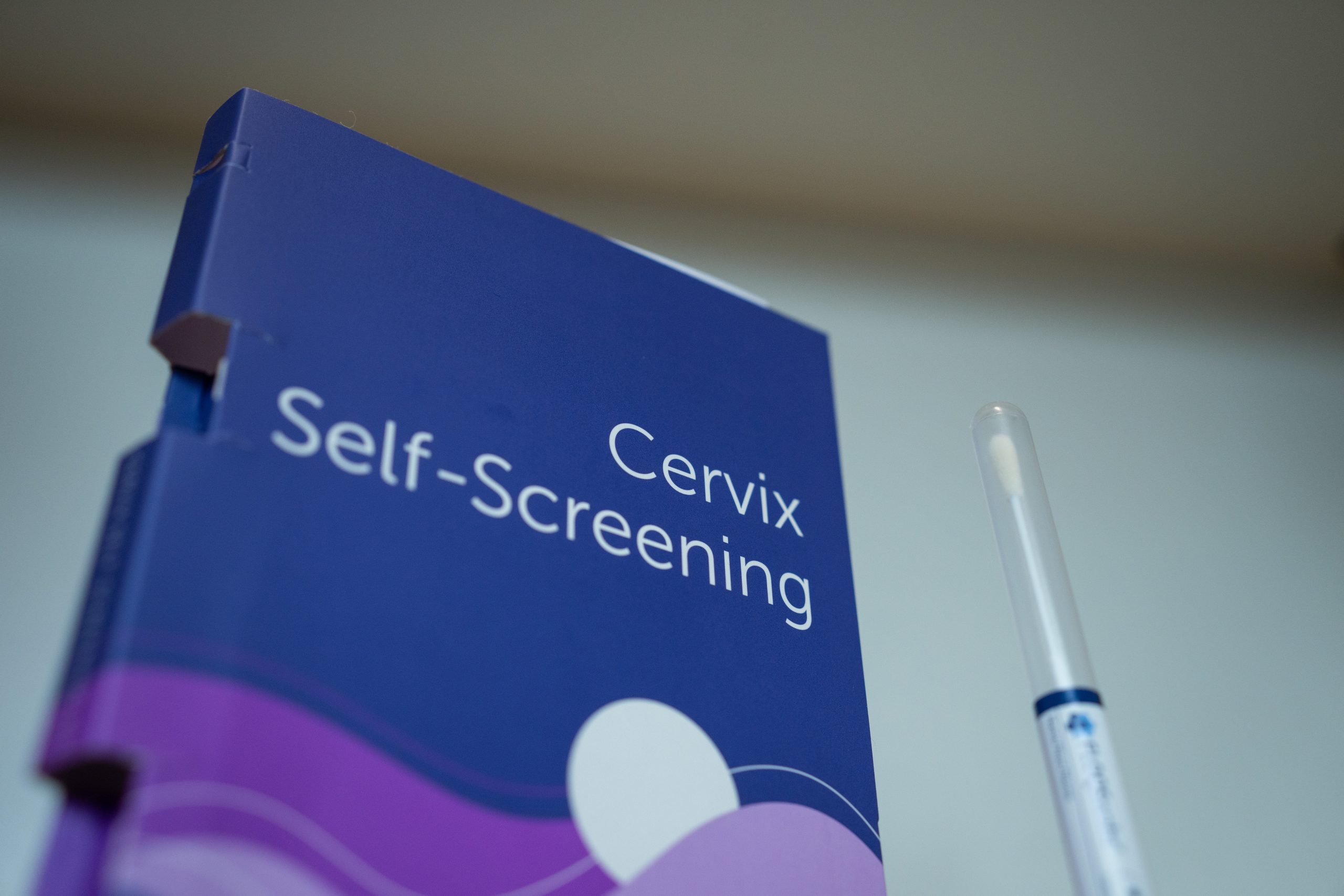Health
Rewarding double-vaxxed Manitobans a chance to motivate holdouts – Winnipeg Free Press


When the province announces the next phase of its pandemic reopening plan, it should give priority to fully vaccinated people when easing restrictions.
Doing so would serve two purposes: allow for the safe reopening of some indoor places and provide a powerful incentive for people to get immunized. Both are critical objectives at this point in the pandemic.
It’s been two weeks — a full incubation period — since Manitoba eased public-health restrictions under the province’s summer reopening plan. As expected, the modest changes did not reverse the trend of declining COVID-19 case numbers or hospitalizations. The combination of strict measures and growing vaccination rates drove down infections and hospital admissions.
It has been a month since a COVID-19 patient was airlifted out of the province for treatment.
The province needs to do two things: boost immunization take–up and prevent unvaccinated people from spreading their droplets, particularly indoors, where the virus is more easily transmitted.
For that reason, the province says it plans to ease restrictions earlier than planned, likely next week. That’s good news.
The biggest challenge now is getting vaccination rates to a level that will allow the economy to reopen permanently. There’s no point lifting restrictions if they have to be reinstated again. Doing so would just mean more avoidable illness and death.
That is a real possibility if too many unvaccinated people are allowed to congregate, especially with the more contagious delta variant in circulation.
The province needs to do two things: boost immunization take-up and prevent unvaccinated people from spreading their droplets, particularly indoors, where the virus is more easily transmitted.
What better way to do that than to give priority to fully immunized people when lifting restrictions?
Manitoba’s vaccination rates over the past month have been stellar. However, the fact remains that this province — and the rest of Canada — are still below levels most experts say need to be reached to return to normal life.
Almost 76 per cent of Manitobans over the age of 12 have at least one dose of the vaccine and 55 per cent have two. The take-up for Manitobans over age 60 is even better: more than 90 per cent have received at least one dose and more than 80 per cent of them have a second. People over 60, the highest risk group, are well protected.
But those under 40 still have a long way to go. Only two-thirds of people in their 20s and 30s have at least one dose. Of those who do, fewer than two-thirds have a second. That leaves a lot of young people unprotected.
The province could allow indoor household visits for people with two shots. That might be difficult to enforce, but it would be similar to challenges around previous household–visit rules.
Only 47 per cent of Manitobans aged 10 to 19 have at least one dose (that’s how the province presents that age cohort, even though the vaccines aren’t available to children under the age of 12 at this point) and 39 per cent of them are fully immunized. Younger people are at a lower risk of severe illness from COVID-19, but they can still spread the virus.
Most experts say well over 80 per cent of people age 12 and up require both shots for life to return to normal. The real number is probably closer to 85 or 90 per cent.
The problem is, the rate at which Manitobans are getting vaccinated has slowed over the past week. The percentage of people with at least one dose is growing by only a quarter of a percentage point a day. Even the take-up for second doses has dropped off in July. It needs a kick-start.
Giving fully immunized Manitobans more freedoms may be the best way to do that. The province could allow indoor household visits for people with two shots. That might be difficult to enforce, but it would be similar to challenges around previous household-visit rules.
The province could reopen places such as movie theatres, museums, art galleries and casinos to fully vaccinated people. Those rules already apply in some settings, including large-scale sporting events and indoor dining where people don’t reside together. Expanding it would allow businesses and not-for-profits to reopen safely, while encouraging more people to get vaccinated. It would kill two birds with one stone.
The longer it takes to fully immunize more than 80 per cent of eligible Manitobans, the greater the risk of a significant fourth wave.
The province should use every carrot and stick it has to avoid that.
tom.brodbeck@freepress.mb.ca
Tom Brodbeck
Columnist
Tom has been covering Manitoba politics since the early 1990s and joined the Winnipeg Free Press news team in 2019.
Health
Nunavut sets up mobile tuberculosis clinic in Naujaat as outbreak grows


|
|
3 have died since outbreak began, 21 diagnosed with active TB
Nunavut’s Health department has opened a community-wide mobile testing clinic in Naujaat, in the hopes of testing as many people as possible for tuberculosis.
It’s been almost a year since a TB outbreak was first declared in the community of 1,200 people on May 16, 2023.
Kevin Tegumiar, Naujaat’s mayor, said the hamlet has been asking for such a clinic for several months.
“Without accurate numbers, we’re not really sure where we are. This clinic will help clear things up,” Tegumiar said.
Tegumiar said three Naujaat residents have died since the outbreak began in the community. Nunavut’s Health department confirmed those numbers in a recent interview with CBC.
Since January 2023, 21 people in Naujaat have been diagnosed with active TB.
Another 118 others have been diagnosed with latent TB, according to the department, which is almost double the number reported in November last year.
Hundreds of tests
Health officials have set a goal to test 1,000 people in Naujaat for TB by the end of the clinic, on May 30.
“We hope that every one of them are coming and get screened during the time that we are here,” said Ekua Agyemang, Nunavut’s deputy chief public health officer. “When TB is identified early, the disease is very easy to treat in the community.”
The Health department said they will deploy a team of health-care workers, including a doctor, four nurses, an epidemiologist, a radiology technician and laboratory technician.
Canada’s chief public health officer, Dr. Theresa Tam, will also visit Naujaat this week as part of a tour alongside Nunavut Tunngavik Inc. officials and the territory’s health minister. Tam will also visit Pond Inlet and Iqaluit.
“Though TB will be a focus of the entire visit, Dr. Tam will also meet with community groups and organizations to discuss homelessness, health education, mental health, and health research initiatives in Nunavut, among other topics,” a news release from NTI said.
Agyemang said in February, the department visited schools and organized a community event to raise awareness about tuberculosis in Naujaat.
Two other outbreaks
Two other TB outbreaks are still ongoing in Pangnirtung and Pond Inlet.
A screening clinic was held in Pangnirtung last fall, which allowed about 70 per cent of the population to be tested.
“There’s definitely ongoing work that still needs to be done, but at this point in time, they’re at a good place in Pangnirtung,” Agyeman said.
Agyeman said at this point, the department does not intend to hold a clinic in Pond Inlet. She also could not provide specific information about the number of cases in the community.





Health
Experts say Canada’s cancer screening guidelines are outdated


|
|
A group of doctors say Canadian cancer screening guidelines set by a national task force are out-of-date and putting people at risk because their cancers aren’t detected early enough.
“I’m faced with treating too many patients dying of prostate cancer on a daily basis due to delayed diagnosis,” Dr. Fred Saad, a urological oncologist and director of prostate cancer research at the Montreal Cancer Institute, said at a news conference in Ottawa on Monday.
The Canadian Task Force on Preventive Health Care, established by the Public Health Agency of Canada, sets clinical guidelines to help family doctors and nurse practitioners decide whether and when to recommend screening and other prevention and early detection health-care measures to their patients.
Its members include primary-care physicians and nurse practitioners, as well as specialists, a spokesperson for the task force said in an email Monday.
But Saad and other doctors associated with the Coalition for Responsible Healthcare Guidelines, which organized the news conference, said the task force’s screening guidelines for breast, prostate, lung and cervical cancer are largely based on older research and conflict with the opinions of specialists in those areas.
For example, the task force recommends against wide use of the prostate specific antigen test, commonly known as a PSA test, for men who haven’t already had prostate cancer. Saad called that advice, which dates back to 2014, “outdated” and “overly simplistic.”
The task force’s recommendation is based on the harms of getting false positive results that lead to unnecessary biopsies and treatment, he said.
But that reasoning falsely assumes that everyone who gets a positive PSA test will automatically get a biopsy, Saad said.
“We are way beyond the era of every abnormal screening test leading to a biopsy and every biopsy leading to treatment,” he said, noting that MRIs can be used to avoid some biopsies.
“Canadian men deserve (to) have the right to decide what is important to them, and family physicians need to stop being confused by recommendations that go against logic and evidence.”
Dr. Martin Yaffe, co-director of the Imaging Research Program at the Ontario Institute for Cancer Research, raised similar concerns about the task force’s breast cancer screening guideline, which doesn’t endorse mammograms for women younger than 50.
That’s despite the fact that the U.S. task force says women 40 and older may decide to get one after discussing the risks and benefits with their primary-care provider.
The Canadian task force is due to update its guidance on breast cancer screening in the coming months, but Yaffe said he’s still concerned.
“The task force leadership demonstrates a strong bias against earlier detection of disease,” he said.
Like Saad, Yaffe believes it puts too much emphasis on the potential harm of false positive results.
“It’s very hard for us and for patients to balance this idea of being called back and being anxious transiently for a few days while things are sorted out, compared to the chance of having cancer go undetected and you end up either dying from it or being treated for very advanced disease.”
But Dr. Eddy Lang, a member of the task force, said the harms of false positives should not be underestimated.
“We’ve certainly recommended in favour of screening when the benefits clearly outweigh the harms,” said Lang, who is an emergency physician and a professor at the University of Calgary’s medical school.
“But we’re cautious and balanced and want to make sure that we consider all perspectives.”
For example, some men get prostate cancer that doesn’t progress, Lang said, but if they undergo treatments they face risks including possible urinary incontinence and erectile dysfunction.
Lang also said the task force monitors research “all the time for important studies that will change our recommendations.”
“And if one of them comes along, we prioritize the updating of that particular guideline,” he said.
The Canadian Cancer Society pulled its endorsement from the task force’s website in December 2022, saying it hadn’t acted quickly enough to review and update its breast cancer screening guidelines to consider including women between 40 and 50.
“(The Canadian Cancer Society) believes there is an obligation to ensure guidelines are keeping pace with the changing environment and new research findings to ensure people in Canada are supported with preventative health care,” it said in an emailed statement Monday evening.
Some provinces have implemented more proactive early detection programs, including screening for breast cancer at younger ages, using human papillomavirus (HPV) testing to screen for cervical cancer and implementing CT scanning to screen for lung cancer, doctors with the Coalition for Responsible Healthcare Guidelines said.
But that leads to “piecemeal” screening systems and unequal access across the country, said Dr. Shushiela Appavoo, a radiologist with the University of Alberta.
Plus, many primary-care providers rely on the national task force guidelines in their discussions with patients, she said.
“The strongest association … with a woman actually going for her breast cancer screen is whether or not her doctor recommends it to her. So if her doctor is not recommending it to her, it doesn’t matter what the provincial guideline allows,” Appavoo said.
In addition to updating its guideline for breast cancer screening this spring, the task force is due to review its guidelines for cervical cancer screening in 2025 and for lung cancer and prostate cancer screening in 2026, according to its website.
Canadian Press health coverage receives support through a partnership with the Canadian Medical Association. CP is solely responsible for this content.





Health
Mobile Health Clinic in Bridgewater this week


|
|
Nova Scotia Health’s mobile primary care clinic. Photo: NS Health.
Nova Scotia Health’s mobile primary care clinic will be retunring to Bridgewater this week for two sessions on Wednesday and Sunday.
They will be setting up at the South Shore Community Health building located at 35 North Street. On Wednesday, April 17 the clinic will be open from 5:30 p.m. until 9:00 p.m., and on Sunday, April 21 it will operate from 9:30 a.m. until 3:00 p.m,.
The clinic is intended to help those without a family doctor, or those unable to book an appointment with their family doctor for non-urgent medical issues.
Types of concerns that may be addressed at the mobile primary care clinic include:
- Prescription refills or renewals (except for controlled substances)
- Minor respiratory symptoms
- Sore throat
- Earaches
- Fever
- Headache
- Rashes
- Minor gastrointestinal concerns (vomiting and diarrhea)
- Cough, flu, or cold symptoms
- Urinary tract infections
- Muscle pain





-



 Sports7 hours ago
Sports7 hours agoTeam Canada’s Olympics looks designed by Lululemon
-
Real eState15 hours ago
Search platform ranks Moncton real estate high | CTV News – CTV News Atlantic
-
Tech14 hours ago
Motorola's Edge 50 Phone Line Has Moto AI, 125-Watt Charging – CNET
-



 Investment23 hours ago
Investment23 hours agoSo You Own Algonquin Stock: Is It Still a Good Investment? – The Motley Fool Canada
-



 Science18 hours ago
Science18 hours agoSpace exploration: A luxury or a necessity? – Phys.org
-



 Investment21 hours ago
Investment21 hours agoGoldman Sachs Backs AI in Hospitals With $47.5 Million Kontakt.io Investment – BNN Bloomberg
-



 Sports20 hours ago
Sports20 hours agoMcDavid hits century mark for assists in 9-2 laugher over San Jose – Edmonton Journal
-
Science20 hours ago
SFU researchers say ant pheromones could help prevent tick bites – Global News




